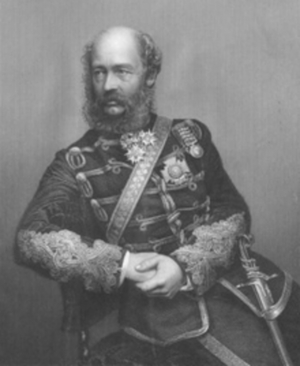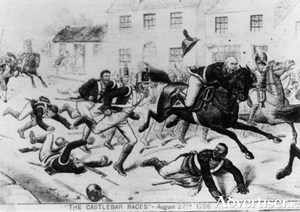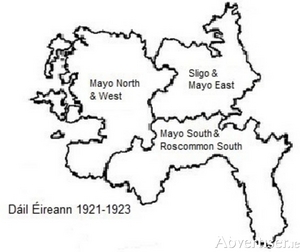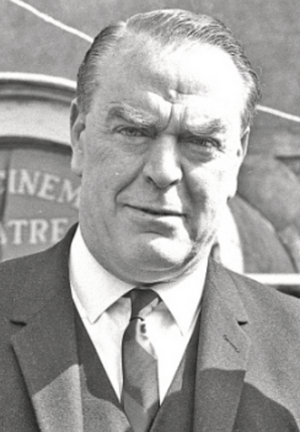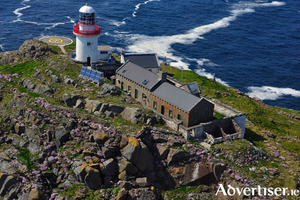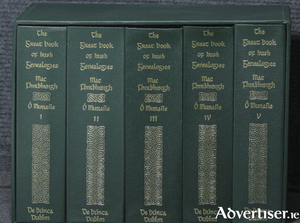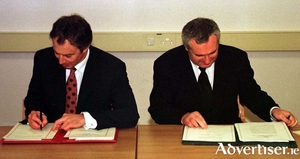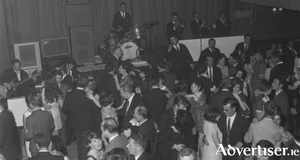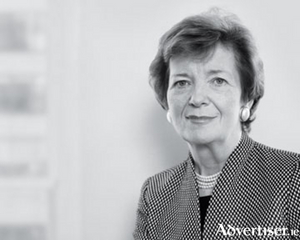The rise of a county capital
Thu, Jan 19, 2017
It is three years to the month since the signing into law by President Higgins of the Local Government Reform Act 2014. The act abolished Ireland’s 80 town councils as part of a range of measures designed to reform local administration. Three of those town councils operated in the Mayo towns of Ballina, Westport, and in the county capital, Castlebar. The debate continues as to whether the abolition of an entire tier of local government was largely beneficial or harmful. It may take longer than three years for any lasting effects to register themselves.
Read more ...When cricket was 'alive ho in the west'
Thu, Jan 19, 2017
The 1880s was a watershed in the history of sport in Ireland. Soccer's All-Ireland governing body was established in Belfast in 1880 and during that decade the sport began to spread out from Ulster and scatter throughout the island. The first set of rules for rugby were drawn up in England in 1845, but the sport did not gain much traction in Ireland until the 1880s, a mere 10 years after the first game was played on Irish soil. The sport’s managing body, the Irish Rugby Football Union, was founded in 1879. The Golfing Union of Ireland was established in 1891, and though the game was being played in Ireland prior to that date, it had not attracted a Mayo following. The first golf club in Connacht was only founded in 1892. In 1884, the Gaelic Athletic Association was formed with a view to promoting Ireland’s native games. All of these sports have grown to become extremely popular in Mayo today but one sport, once arguably the most popular organised sport in the county, has virtually disappeared.
Cricket was introduced into Ireland in the 18th century. The earliest known reference to the sport is of a match held in Dublin in 1792 between the British garrison and an "All-Ireland" team. The oldest cricket club still in existence in Ireland is Phoenix Cricket Club in Dublin, which was founded in 1830 by John Parnell, father of Charles Stewart Parnell. In Mayo, the County Club was already in existence by 1818. All strata of society were allowed play, and were encouraged to play the game. By the 1870s, very active cricket clubs existed across the county. The early games were played very much with a parochial feel to them with social events organised around the games themselves. Hollymount Cricket Club hosted a regular athletic sports day. By incorporating athletes into the day, the club opened up the event, and cricket, to a wider audience. Castlebar Cricket Club held concerts with the dual purpose of raising funds and creating a social mixer for club members, families, and supporters. Friendly rivalries existed between certain clubs. In the east of the county, Swinford and Kilkelly cricket clubs frequently battled for sporting honours. The bigger towns of Castlebar, Ballina, and Westport played each other regularly, and being evenly matched, reports of their matches were of interest to the county’s wider cricket support. At the inaugural meeting of the Ballyhaunis Cricket Club in 1893, the chairman noticed that every town in the west had a cricket club. So strong was cricket in Mayo that "Ranje", a provincial newspaper columnist, cheered "Cricket's alive ho! in the West". Ranje’s popular column gave cricket updates on Mayo teams and tips on how to play the game's more common strokes.
Read more ...Rebelling against the rebellion
Fri, Jan 13, 2017
Folklore, song, and verse dedicated to the rebellion of 1798 usually relay the romantic image of an heroic, clandestine, French army joining forces with a willing and equally heroic band of Irish rebels. Bound by a thirst for liberté, égalité and fraternité, the Franco-Irish forces grew in strength as they progressed through the county, bravely securing victories over the might of the British Crown. But one rebel's contemporary account of the Franco-Irish campaign challenges the notion of international solidarity among equals that has dominated the narrative of the events of 1798.
Read more ...Mayo TDs and the Treaty debates
Fri, Jan 06, 2017
This January 7 marks the 95th anniversary of one of the most influential votes to have been taken by Dáil Éireann. The result of the Anglo-Irish Treaty vote continues to shape Ireland’s relationship with Britain and her place within the family of European and global nations to this day, as it does the domestic politics on this island. The Treaty was an agreement between the government of the United Kingdom and representatives of the Irish Republic, signed on December 6 1921, which brought the War of Independence to an end.
Read more ...The economics of maintaining the Mayo Gaeltacht
Fri, Dec 30, 2016
In 1851, the Mayo Gaeltacht stretched west across the county from a line between Kilasser and Ballindine, excluding the town of Ballina. The official census figures for that year record that 65.8 per cent of the county’s population could speak the Irish language. By 1926, that figure had plummeted to 36.8 per cent and today, 47.2 per cent of the Mayo population claim the ability to speak the language, though to vastly different standards. Statistics for where the language is living and in everyday use are more important and telling. In that regard, the Mayo Gaeltacht is now confined to the Erris region, the eastern half of Achill Island, the Corraun Peninsula and a pocket around Tourmakeady on the western shore of Lough Mask.
Read more ...Christmas in Mayo, one hundred years ago
Fri, Dec 23, 2016
This is it, the last Friday before Christmas. Just two days to go, and no doubt you are busy completing Christmas time chores like whitewashing your house or making a three branched tallow candle. The way we celebrate, observe or mark Christmas has changed and will continue to change. That is not a criticism of modern life, that is life. Traditions and customs evolve, they always have done, they always will. How did you mark St Martin’s Day on November 11 last? Did you kill a rooster and sprinkle the four corners of your house with its blood to keep all danger and trouble away? Rightly considered bizarre today, but that was a custom in Mayo some 100 years ago. Recognising that those long established traditions were in danger of being forgotten to an albeit slowly modernising Ireland, the Irish Folklore Commission developed a recording scheme that ran between 1937 and 1938 and which invited Irish Free State primary schoolchildren to compile and submit folklore from their local area. The children responded in their tens of thousands with folktales, customs and crafts, gleaned from their extended families and written down by their own hands. Thankfully, schoolchildren from across Mayo participated and their returns document our county’s not too distant Christmas beliefs and practices.
Young Nellie Caulfield from Tulrohaun, close to Mayo’s borders with Roscommon and Galway, paints a picture in her recordings of a time when everyone celebrated the Nativity. Nellie’s research added that in some places it was a mortal sin to bear enmity for past offences. At Christmas, she continued, every door is thrown open and everything in the house is shared willingly with whoever enters to ask for shelter or refreshment. There was an observance of forming a three branched tallow candle to commemorate the Trinity. Each of the branches was lit at dusk on Christmas Eve, but all three were extinguished at midnight. The remains of the triple candle were, however, carefully preserved until the following year as a protection against the visits of all evil spirits except whiskey. The practice of leaving one’s door open was not just to welcome mortal travellers. After interviewing his 40-year-old father Patrick, schoolboy James McDonnell wrote that the people of his village, Belcarra near Castlebar, left their door open on Christmas night so that the Blessed Virgin would have shelter. They would light a candle on that night to direct the Blessed Virgin so that she may leave her blessing on the house. In James’ village, the old people used to give bread to all the animals and at twelve o'clock on Christmas night all the dumb animals would begin to talk and each of them would go down on their knees.
Read more ...The siege of Blackrock Lighthouse
Fri, Dec 16, 2016
Fifteen kilometres southwest of Mayo's Mullet Peninsula, beyond the pillars of the Inishkea and Duvillaun islands, lies the isolated island of Blackrock. Appearing on the horizon like an abandoned vessel, this small, rocky, outcrop has been without a permanent resident for many decades, but the sound of the crashing waves and the constant coating of spray is a reminder of the horror that almost claimed the lives of three men in the winter of 1942-43 when the rock became the scene of a prolonged and frightening wartime siege.
Read more ...Connecting medieval and modern Mayo
Fri, Dec 09, 2016
If you have ever attempted to compile your family tree you may have already felt that sense of frustration when you realise that all accessible leads have been exhausted. Truthfully, at that point there is also a feeling of relief. Relief in the knowledge that there are no more stones to overturn, that you can finally park the family tree as being ‘finished’, which of course it never is. If, like the majority of the county, your ancestry is Irish and Catholic, you will be fortunate to trace your pedigree back to the relatively recent 18th century. The reason being that State registering of births, deaths, and marriages did not begin until 1864 and the earlier recording of this information by Catholic clergy in their parishes was haphazard. The earliest parish records for Aughaval (Westport) only begin in 1821. Records for Kilmoremoy (Ballina) and Aglish (Castlebar) begin in 1823 and 1824, respectively. For information before the early 19th century, the amateur genealogist is largely dependent on luck and supposition.
Read more ...Mayo’s apathy toward the Good Friday Agreement
Fri, Dec 02, 2016
The British-Irish agreement of the Good Friday Agreement (GFA) came into force on this day in 1999. After two years of protracted talks, the GFA of 1998 had finally achieved a binding consensus among political rivals in Northern Ireland that had not been achieved, or even attempted on such a scale, before. The GFA was more inclusive than previous political agreements in that its negotiating body, the Northern Ireland Forum, was open to all parties, nationalist, unionist, republican, loyalist and centre. The GFA was formally agreed by the Irish and British governments and participating parties on April 10 1998. Under the agreement, the governments committed to putting the settlement to the people of the Republic and Northern Ireland in referendums to be held on May 22 of that year.
Read more ...Be careful how you dance this Advent
Fri, Nov 25, 2016
We are one month out from Christmas, to the day, and I would like to mark it by wishing you and yours a happy Black Friday. The retailers’ fabricated start to the Christmas shopping season has already caught on in little old Ireland. The run up to Christmas no longer begins on the Church’s specified day, but instead is determined by frenzied shoppers, wound up by delighted retailers. Of course, the upside is that shoppers bag bargains, businesses take on extra employees, and extra income is regenerated as a result of the additional footfall.
Read more ...When presidents were presidential
Fri, Nov 18, 2016
History was indeed made on November 8 when Donald Trump was elected 45th president of the United States. I am not quite sure why history was made, a Republican beating a Democrat is not new, but it certainly feels like something immense has happened. Only something immense could sway the US electorate from voting to return a black Democrat in 2012, to voting four years later for a white billionaire Republican who holds overtly racist and misogynistic views.
Read more ...Dublin in twelve hours, and that is a promise
Fri, Nov 11, 2016
Through the years of kingdom, empire, dominion, republic and continental union, County Mayo has retained the rarely advantageous honour of being among the most westerly outposts of each political entity. The county's distance from the heart of government and its demanding terrain seriously hampered any mode of movement, in and out of Mayo. At the passing of the Acts of Union in 1800, the Crown accepted that responding to sporadic violent opposition to the legislation would be difficult considering a regiment on foot would take six days to travel from Dublin to the west. Correspondence between the British authorities in Dublin and their surrogates in Mayo would therefore be all the more urgent. However, at this time, it took the swift mail coach, running through the night, more than 30 hours to reach the county capital. Logistical challenges existed too for the movement of produce and for travelling men of business. Any coach journey covering 60 miles a day was considered efficient. To reach even Mayo's eastern border by coach from Dublin would have taken two days with good conditions. Land transport, at the turn of the 19th century, was undependable and slow. As a result, long distance travel on the part of most people was simply not undertaken due the many obstacles it raised.
That all changed with the arrival in Ireland of Carlo Bianconi. The Italian had landed in Ireland in 1802 and had set up a small two car service in Clonmel in 1815. Charles Bianconi (as he was by then known) began offering cheap and expeditious travelling across extended distances throughout Ireland. Despite the cars being uncovered and open to the harsh Irish elements, the services proved hugely successful as they were scheduled, fast, and many stages on each route had a Bianconi owned inn in which food and lodgings were supplied before the traveller progressed. Bianconi’s horse drawn transport operated in Castlebar from 1836. His Mayo network was extended to include a daily service from Longford to Ballina that ran through Foxford. Bianconi revolutionised movement for the people of Mayo when in August 1851 he announced an ambitious new route that would take a patron from Ballina to Dublin in one day. The two horse car would leave Ballina every morning at 5.45am (except Sunday) and would progress first to Castlebar, then Westport, Leenane, Letterfrack, and on to Clifden in time for the mail coach from Galway to Dublin and in time for the Westport and Castlebar day coach to Galway railway station. Bianconi's new route announcement was well timed to coincide with the opening of the Galway railway station that same month. In addition to the two horse car, the entrepreneur timetabled a well-equipped four horse coach to leave Westport for Castlebar every morning. After Castlebar, the coach would pass through Ballinrobe and Shrule on its journey to Galway. The capacity for the four horse coach was 15 passengers, four inside and 11 outside. Bianconi boasted that by availing of his routes, the Mayo traveller could be in Dublin that same evening enjoying an early dinner.
Read more ...